What’s it like to watch $250 million through a digital wall—locked away by a forgotten password?
Just ask Stefan Thomas. His story reveals why secure, user-friendly crypto wallets are revolutionizing digital finance.
Speaking of which—where do you think a $3.0 trillion lie?
Right, in the pants pockets.
That’s today’s crypto reality. Your smartphone now serves as your digital wallet. That happened thanks to apps like Coinbase, MetaMask, and Trust Wallet. Gone are the complex crypto days—now you can store, trade, and manage digital assets with just a thumb swipe.
And here’s the real turning point: forget trends—this is a revolution in your pocket. With 562 million active users and counting, everyone wants a piece of the pie. Even PayPal and Robinhood are racing to catch up, while crypto-native wallets keep stealing the show.
The best thing?
It’s mutually beneficial. So, businesses gain profits getting fees and premium features, while users finally get what they’ve always strived for: security, total control, and access to the DeFi world. No banking middlemen—you’re the boss now.
How Much Does It Cost to Build a Crypto Wallet App?
So, how much will it cost an investor to develop a crypto wallet? To really answer that, it’s necessary to look closely at the tech level of the product. But in terms of numbers, it starts around $10,000 and can go up to $50,000 or more!
| Features | Basic Wallet | Medium Wallet | Advanced Wallet |
|---|---|---|---|
| Supported Cryptocurrencies | Major coins (e.g., BTC, ETH) | Wider range, including popular altcoins | Extensive support, even for niche tokens |
| User-Friendly Interface | Simple and intuitive | Moderately complex with customizable options | Advanced design with detailed functionalities |
| Security Features | Password protection | Password, 2FA, and biometric options | Multi-layer security, hardware wallet support |
| Private Key Control | User-controlled keys | User-controlled keys | Advanced management options with security measures |
| Transaction Functionality | Basic send/receive | Custom fees, labeled transactions | Advanced features like multi-signature support |
| Transaction History | Basic transaction history | Detailed history with export options | Comprehensive history with analytics and reporting |
| Backup and Recovery Solutions | Seed phrase and simple backup | Seed phrase with encrypted backup options | Multi-factor recovery, including hardware backup |
| Educational Resources | Basic FAQs and help section | In-app tutorials and community support | Extensive documentation, tutorials, and customer support |
| Platform Compatibility | Mobile or desktop compatibility | Cross-platform availability | Universal compatibility across devices and formats |
| Notifications and Alerts | Not available | Basic notifications for transactions | Advanced alerts and market notifications |
| In-Wallet Exchange Options | Not available | Basic exchange functionality | Advanced trading features with various markets |
| Integration with DeFi Platforms | Not available | Basic DeFi features | Comprehensive DeFi integration and features |
| Cost | $10,000 – $20,000 | $20,000 – $50,000 | $50,000+ |
Basic level. Such a crypto wallet will have limited functions. A small number of supported coins. A simple interface. The most necessary tools for security. Developing such a wallet will cost from $10,000 to $20,000.
A mid-level crypto wallet. There are more functions here. Different cryptocurrencies are supported. Improved interface, alerts. Integration with exchanges and their services is possible. Improved security system, for example, two-factor authentication. Developing such functionality of a crypto wallet will cost an investor from $20,000 to $50,000.
Crypto wallet with advanced features. They support most digital coins. It is up to the user to choose which coins to use. Customizable interface. Deep integration with exchanges. DApps, NFT support, staking, crediting are included. High level of security. In addition to two-factor authentication, biometrics (fingerprints, facial scan) is also present. Creating such a crypto wallet will cost from $50,000+.
Key Factors Affecting the Cost of FinTech App Development
The price can vary. It’s influenced by several key factors. Understanding these elements can offer insights into what drives the overall cost. Explore these factors to gain a clearer perspective on pricing dynamics.
| Factors Affecting FinTech App Development Costs | Basic | Medium | Advanced |
|---|---|---|---|
| Complexity of Features | Simple account management and basic transactions | Additional features like data analytics and multi-currency support requiring more sophisticated tech stacks | Advanced functionalities requiring cutting-edge technologies (e.g., AI, real-time data processing) |
| Technology Stack | Standard frameworks and technologies (e.g., basic databases, common programming languages) | A mix of standard and slightly advanced technologies tailored to medium complexities | Latest frameworks and specialized technologies suited for high-performance features |
| Choice of Platform | Single-platform development (e.g., iOS only) | Cross-platform solutions or single-platform with additional features | Native development for multiple platforms (iOS & Android) |
| Compliance and Security | Basic data protection and user authentication | Compliance with regulations (e.g., KYC, AML), with moderate security measures | Comprehensive security measures, including encryption and fraud detection |
| Integration with Third-Party Services | Minimal integration (e.g., basic payment gateway) | Moderate integrations (e.g., bank APIs, additional services), with potential for complex setups | Extensive integrations with multiple complex APIs and systems |
| Development Team’s Location | Local or offshore development team (can vary in costs) | Local, nearshore, or offshore teams, offering a mix of rates and expertise | Offshore or remote teams, which often have lower rates, with potential communication challenges |
| Testing and Quality Assurance | Basic testing for functionality | Comprehensive testing, including user acceptance testing and some performance assessments | Rigorous testing, including security audits and performance optimization |
No need to explain every detail from the table. It’s clear enough. Instead, let’s focus on a some really important factors. They show why costs can be different.
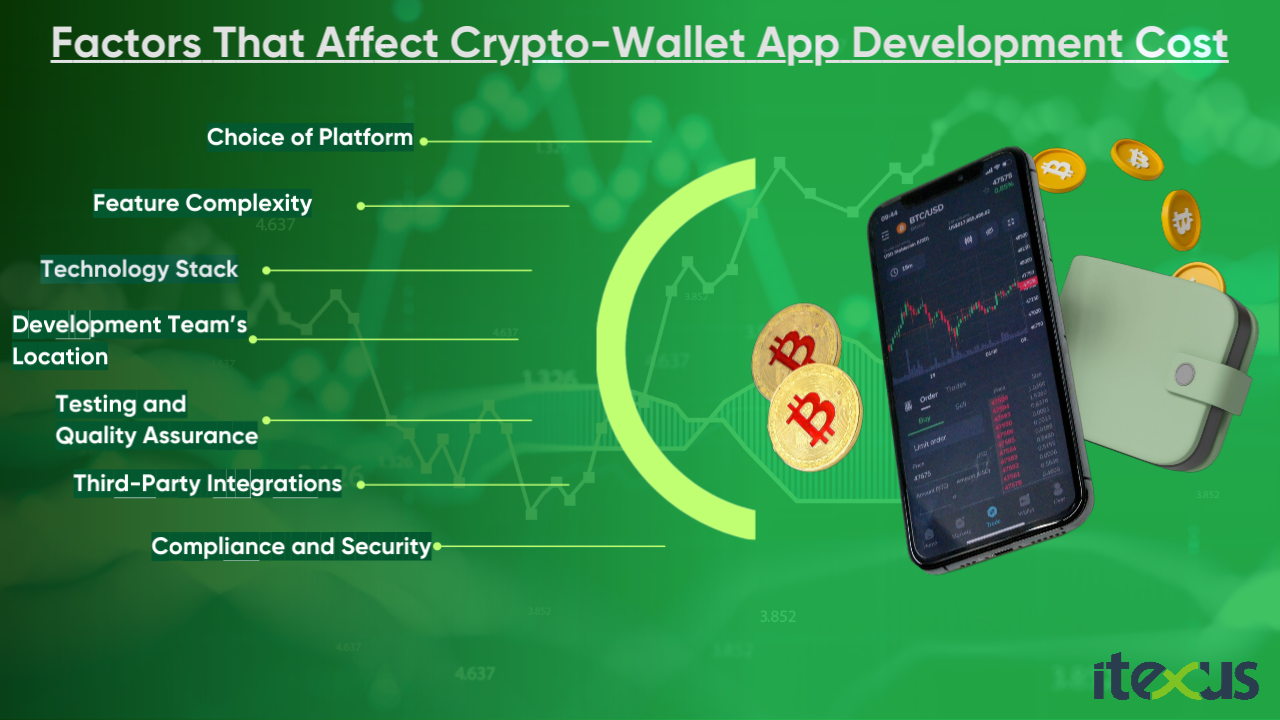
Platform Selection
There are two popular phone operating systems in the world: iOS (Apple) and Android (Google).
Choosing the right platform for a crypto wallet requires knowing the target market. iOS is popular in North America, while Europe prefers Android.
Building for iOS costs tens of thousands more. It offers easier and cheaper testing because of standard features. Developing an Android app ranges from $10,000 to $50,000+, but testing can be challenging due to the many different devices.
A cross-platform app can also be created to work on both iOS and Android. This option costs more, starting at $15,000, because code optimization is needed for both systems. A cross-platform wallet has a higher initial cost, but it avoids extra expenses when switching platforms later.
App Development Tech Stack
The cost to create a crypto wallet depends on the technology you choose. It’s key to hire people who understand the latest programming languages. This may cost more at first, but it will save money later because of better code, faster development, easier maintenance, and other reasons.
Complexity of Features
Think about how complex features can really shape the development process and costs.
- More Development Time: If features are complicated, they take longer to design, build, and test.
- Bigger Teams: Advanced features often need more people working on the project, which can raise labor costs.
- More Risks: Sophisticated functions can bring challenges like security issues, tough user experiences, and compliance with rules. That means extra time for testing and reducing risks.
- Standing Out in the Market: Apps with unique, advanced features can attract more users and add more value, which can make the higher development costs worth it.
Compliance and Security
Compliance and security are extremely important in FinTech. These apps must follow various regulations, meaning teams need extra resources and know-how in areas like KYC, AML, and GDPR.
Security is also crucial. Strong measures like encryption and safe data storage add time and money to the project. Ongoing compliance, including regular audits and updates, also increases costs.
It might feel like a lot upfront, but it builds user trust. That trust can attract more users and boost profits later on. It’s all about making the app safe and reliable for everyone.
Development Team Expertise
So, here’s the deal. If you’re looking at a long-term investment in crypto wallet development, team up with a partner company. Their specialists have the know-how in modern tech. It’s really the best choice for getting good value.
Check out the table below. It shows how much the cost of development varies depending on the type of team you choose.
| Type of developer | Features | Cost of development |
| In-house team | Quick response to problems. High salaries. Long search for specialists | $100,000+ |
| Company partner | Professionalism. Large selection of technological stack. Work, according to the contract | From $20,000 |
| Freelancers | Low cost of services. There may be problems with compliance | From $10,000 |
App Development Tech Stack
After 12 years in FinTech app development, we get it. Picking the right tech stack is super important. It can save you money down the line. Seriously, hire someone who really knows their stuff when it comes to current programming languages.
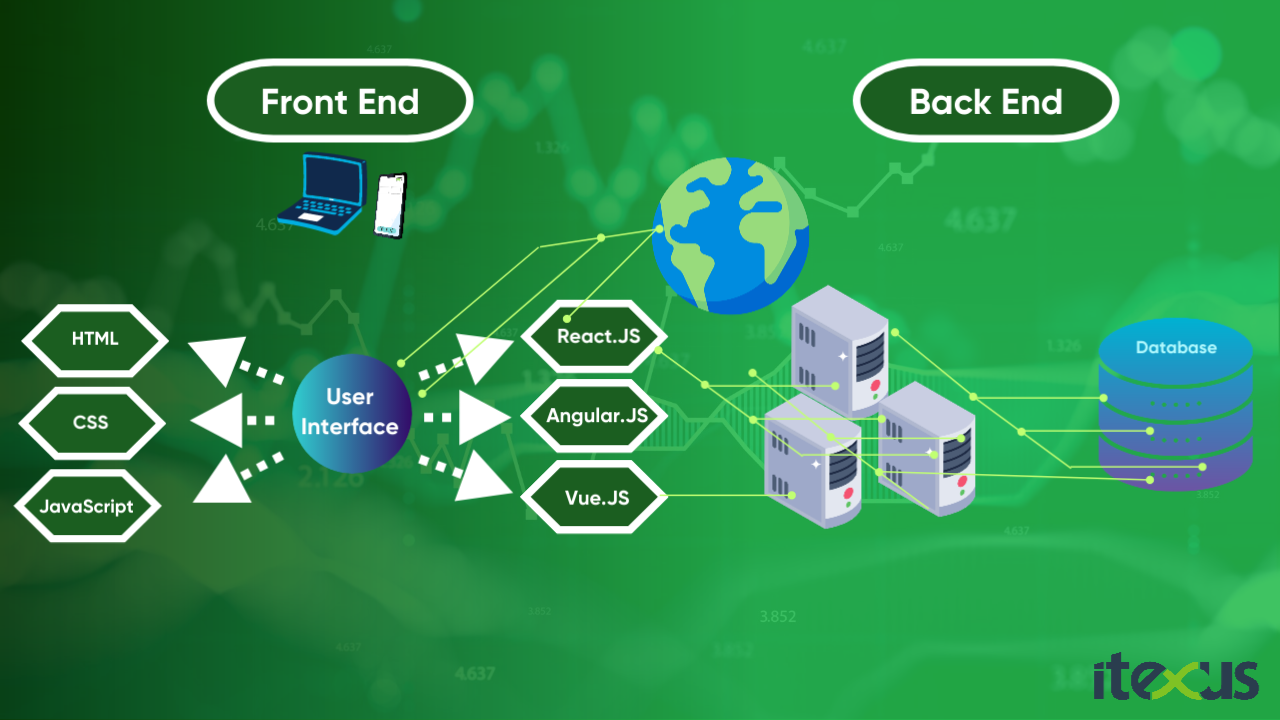
Here’s a quick look at each part involved in creating a crypto wallet app.
Frontend Development:
- React.js and Angular.js for web UIs.
- React Native and Flutter for mobile apps.
- HTML/CSS for web structure and styling.
- Kotlin/Java for Android and Swift/Objective-C for iOS.
Backend Development:
- Node.js for scalable applications.
- Python for server-side tasks.
- Express.js framework for managing server requests.
Database:
- PostgreSQL for relational data.
- MongoDB for flexible, NoSQL storage.
- Redis for caching and real-time processing.
Cloud Infrastructure:
- PaaS like Heroku or Google App Engine for web apps.
- BaaS like AWS, Microsoft Azure, or IBM Cloud for blockchain functions.
Encryption and Security:
- Encryption: Use AES for encrypting data and HTTPS for securing data transmission.
- Authentication: Implement multi-factor authentication (MFA) and biometric options like fingerprints or facial recognition.
- Security Audits: Conduct testing to find vulnerabilities before launch.
| Features/Complexity Level | Basic | Medium | Advanced |
|---|---|---|---|
| MVP functionality | + | + | + |
| User Authentication and Security | + | + | + |
| Responsive Design | + | + | + |
| Basic CRUD (Create, Read, Update, and Delete) Functionality, | + | + | + |
| Advanced State Management | + | + | |
| RESTful and GraphQL APIs | + | + | |
| Testing and Quality Assurance | + | ||
| Microservices Architecture | + | ||
| Machine Learning Integration | + | ||
| Data Analytics and Visualization | + | ||
| Natural Language Processing (NLP) | + | ||
| Cost | $10,000 – $20,000 | $20,000 – $50,000 | $50,000+ |
Typically, our customers see discounts of 10% to 20% compared to market rates.
Feel free to check out some of the projects we’ve worked on!
- Cryptocurrency e-Wallet App Ecosystem for Coinstar, a global fintech enterprise: featuring web and mobile crypto wallets, embedded kiosk software, and a cloud-based API server.
- Automated Stock Trading Platform: An automated, real-time trading system that allows administrators to configure trading strategies.
- Wealth Management Platform: With Robo Advisor, Remote Portfolio Construction, and Monitoring Functionality.
- Financial Data Analytical Platform: AI-based data analytical platform for wealth advisors and fund distributors.
- White-Label Mobile Banking App: A white-label mobile banking application for a Silicon Valley-based digital banking services provider.
Get in touch for a free consultation! We’ll give you a real quick estimate for your project.
Main functions of the crypto wallet application
Whatever type of crypto wallet it is, it needs some basic features. Many of these are similar to e-wallets, but there are key differences. Let’s check those out!
First up is the user control panel. Once users install the wallet, they have to register.
Registration isn’t easy. To generate a crypto wallet, users must enter a secret phrase. This phrase is crucial for creating encryption keys. Plus, they’ll need to provide an email, password, and a PIN. These are the basic security tools. To give you an idea, developing this kind of functionality will start at around $1,000. Of course, it all depends on how complex it is.
Linking bank accounts is key. Users want to do more than just hold digital coins—they’ll often want to cash them out as fiat money. For that, linking bank cards is necessary.
This feature is super useful for those in countries where cryptocurrency is banned. To link a bank card, users must provide their name, expiration date, and CVV code.
Just for your understanding, developing this feature will cost around $5,000. That’s because it involves a lot of tasks, either creating a custom payment gateway or integrating with an existing one.
Now let’s take a look at the other specific functions. Let’s start with the QR code scanner.
A crypto wallet address is basically just a long string of characters. Typing 20 to 30 characters can be tough, and mistakes can happen!
To make it easier, a QR code is generated when the wallet address is created. Users can send this code to others to receive money or scan it with a camera to make transfers or payments. Please note that developing this feature will cost around $2,000.
For added security, using biometrics is a must—Face ID or Touch ID is the way to go!

To access their funds, users just need to scan a fingerprint or their face. It’s a solid way to keep those digital coins safe! Integrating biometrics into a crypto wallet will cost around $5,000.
And here’s something cool: you can turn your crypto wallet into a regular payment method with a virtual card. Right now, you can’t use cryptocurrency everywhere, but a virtual card lets you easily transfer funds and pay for things online.
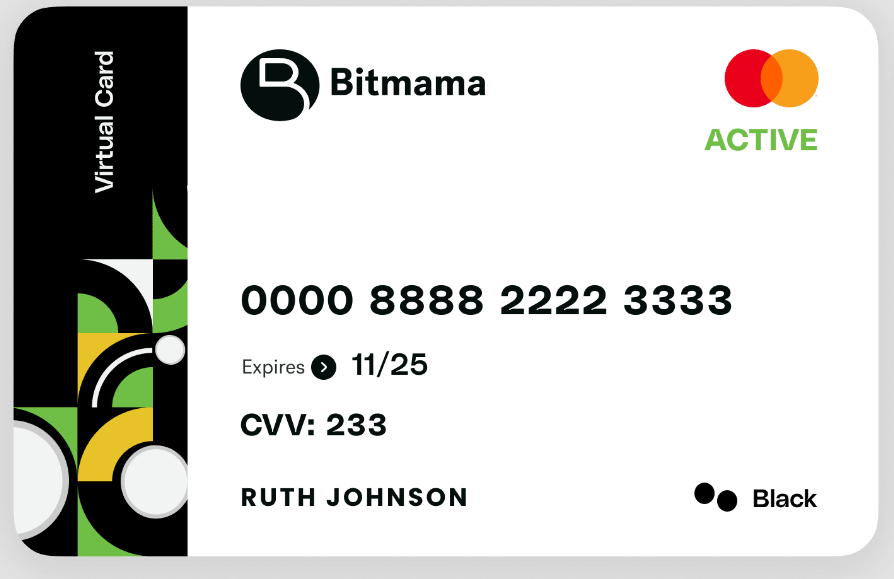
Once you connect a virtual card, it’ll show the balance of your crypto account—like BTC, ETH, and USDT. Plus, it’ll have a regular card number, expiration date, and CVV code. Trust me, developing this kind of feature is tough. It’ll cost investors around $10,000.
When paying for services or buying something with cryptocurrency, a receipt pops up. It pretty much looks like the regular receipts you get at the supermarket checkout.
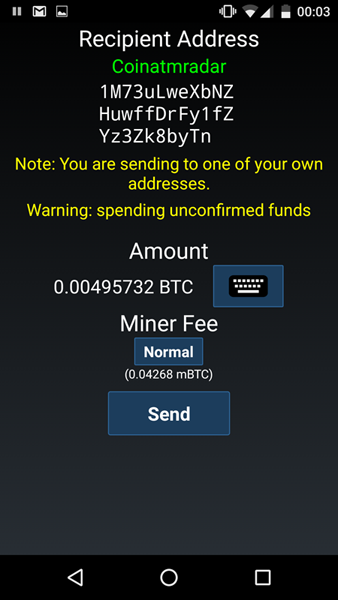
The digital receipt shows the address of the recipient’s crypto wallet. It also includes the date and time the funds were sent, plus how much was paid to miners. This feature will cost between $1,000 and $4,000, depending on the details included.
When funds are sent or received, the crypto wallet pops up notifications on the screen. If those aren’t wanted, they can be turned off. Adding this notification feature will cost about $2,000.
Hidden Costs in FinTech App Development
Not many developers mention those sneaky extra costs that are specific to crypto wallets. These can really add up! Our company knows all about them from experience.
Check out the main ones.
First off, there’s AML and KYC compliance, plus legal advice. Even though cryptocurrency is seen as anonymous, you need to prove your identity when cashing out or withdrawing to a bank card. That’s where KYC comes in.
We recommend using KYC providers like Jumio, Onfido, or Trulioo. They charge between $1 and $5 for each user verification. Not a huge amount, but it’s definitely worth mentioning!
Also, consider the legal documentation! Legal services will run about $500 to $1,000 a month, depending on where you are.
Infrastructure and scalability
This is another hidden cost to think about. For most folks, it makes sense to use third-party services like AWS, Google Cloud Platform, or Microsoft Azure. They’re great for scalability and managing databases. Way easier and cheaper than setting up your own data center!
| Leased service | Approximate monthly cost |
| Virtual server | $100-500 |
| Data storage | $20-200 |
| Database | $100-1000 |
| Backup | $50-500 |
| Encryption and security | $400-900 |
Maintenance and support costs
Just like any app, a crypto wallet needs support. That means disaster recovery if things go sideways and updates rolling out. To keep an eye on quality and customer service, a tech department is a must. This’ll cost another $500 to $1,000 a month.
How to Reduce Your FinTech App Development Costs
Cutting costs on FinTech app development always matters, right?
We love surprising our clients with top-notch products that offer the best price/quality ratio. That means they get impressive ROI. Just check out our partners’ testimonials!
Wondering how we do it?
It’s simple: no unnecessary features. Extra functionality? Extra costs. We stick to the essential functions needed for a smooth-running crypto wallet. That’s the same way we tackled our recent project with Coinstar, a big name in fintech.
Sometimes, going for a cross-platform version of a crypto wallet is the smart choice for cutting costs. It might seem pricier at first, but trust me, it’s cheaper in the long run than building separate apps for Android and iOS.
Makes sense, right?
A big chunk of the costs comes from developer fees. At Itexus, we keep our rates reasonable, thanks to our skilled team in Eastern Europe. That means our clients save a ton!
We’ve got loads of experience in developing MVP applications. It’s all about creating a prototype with just the basics. With an MVP, clients can find out what they really need and get user feedback.
When you choose us, you’re trusting your crypto wallet development to experts with tons of experience. Want proof? Take a look at our cases and clients. You’ll get a quality product without breaking the bank!
Innovative Technologies and Trends in Crypto Wallets
What does the future hold for crypto wallets? Let’s dive into the main trends.
First up, AI. It’s a big deal! AI will boost the security of personal data. Plus, it’ll make analytics way better. Users will get more accurate recommendations thanks to AI analysis.
Next, we’ve got cryptocurrencies. They rely on blockchain tech. Unlike regular bank transfers, crypto transactions are signed with a private key and super-secure encryption. You can’t just swap a transaction block for a fake one. Those complex math calculations and encryption make it impossible!
One of the coolest innovations? Using cryptocurrency for the Internet of Things (IoT). How about this: smart TVs paying for services? Smart fridges ordering groceries! The money just gets deducted right from your crypto wallet.
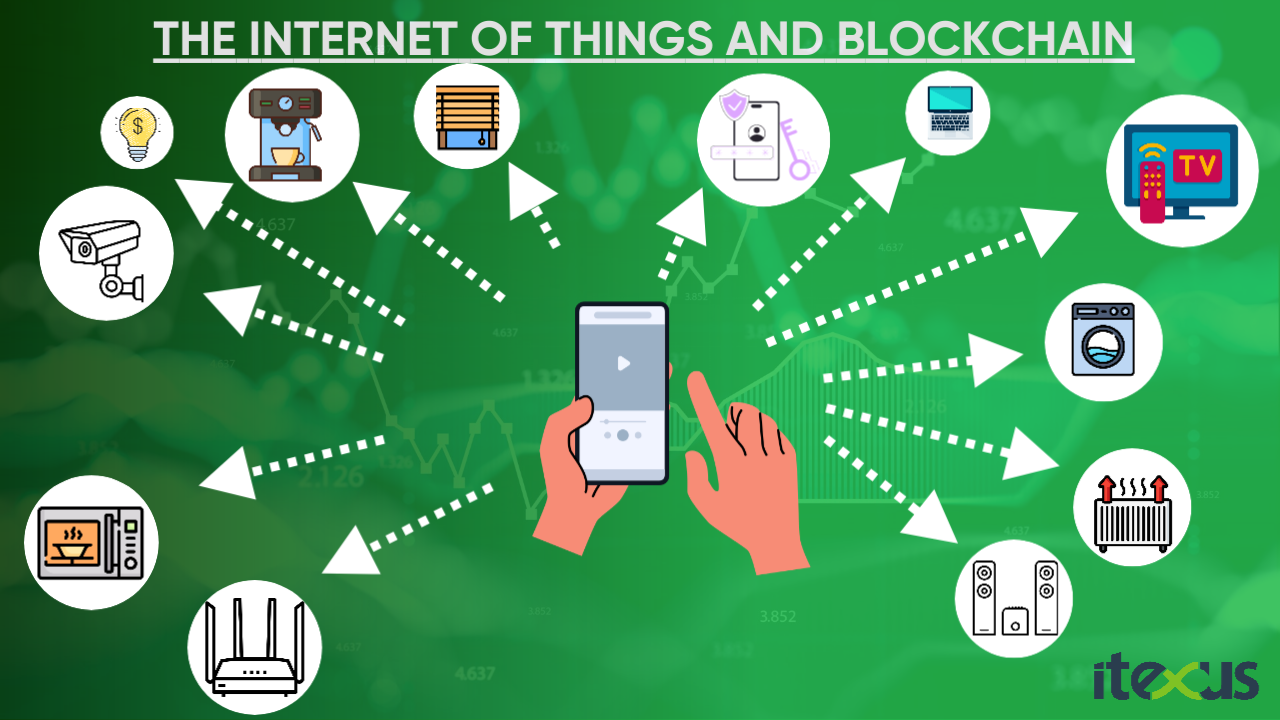
My Final Insights for Crypto Wallet Development: The Vital Role of Partnering
Having explored the various factors discussed in this article regarding the costs of crypto wallet development, you’re likely contemplating creating such a wallet. While it may be tempting to dive into countless online sources, the real solution lies in partnering with a reliable developer who can guide you through every phase of the crypto wallet creation process.
It’s crucial that this developer possesses extensive expertise specifically in Fintech—not merely general development experience, but a focused background in e-Wallets, Crypto Trading Platform, asset management, online payments, digital banking, wealth management, digital lending, and related solutions.
So, why not consider our Europe-based company? At Itexus, we bring over 12 years of experience in Fintech app development, earning the trust of both large and small businesses, as well as banks around the world—from Switzerland to Germany and UK, Canada to the United Arab Emirates, and, of course, the USA.
We’d like to highlight our recent project that involved developing a cryptocurrency e-Wallet application ecosystem for a leading global fintech enterprise, Coinstar.
We specialize in creating exceptional fintech applications tailored to your unique business needs. From selecting the right tech stack to ensuring intuitive UI/UX design, our dedicated team is committed to realizing your vision. Let us collaborate with you to create secure and efficient digital finance solutions.